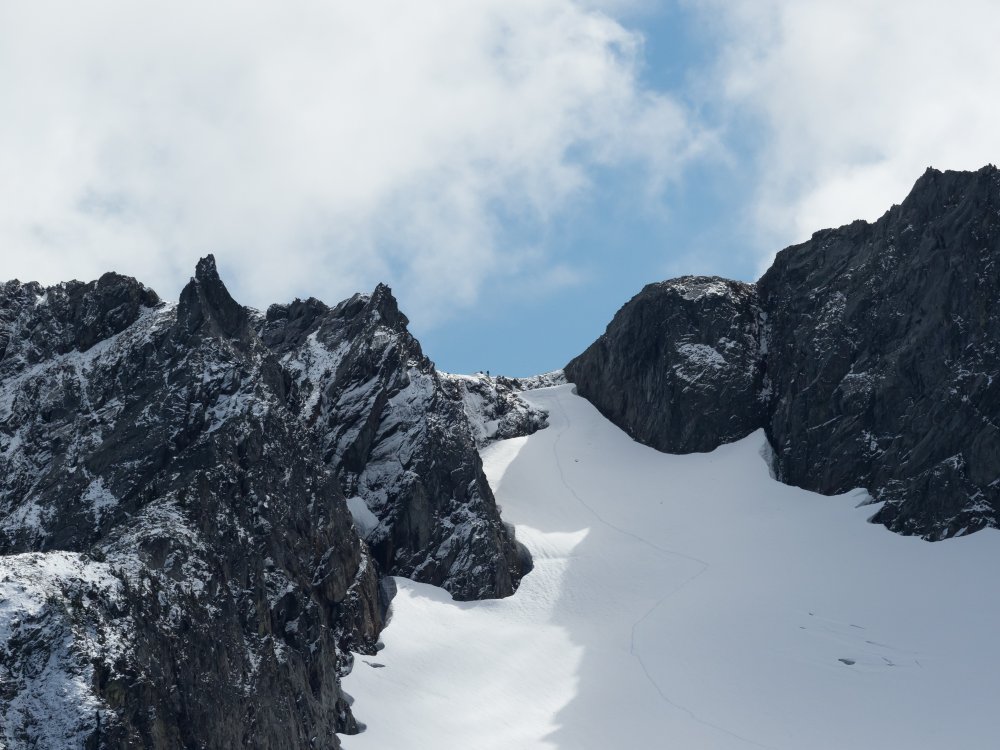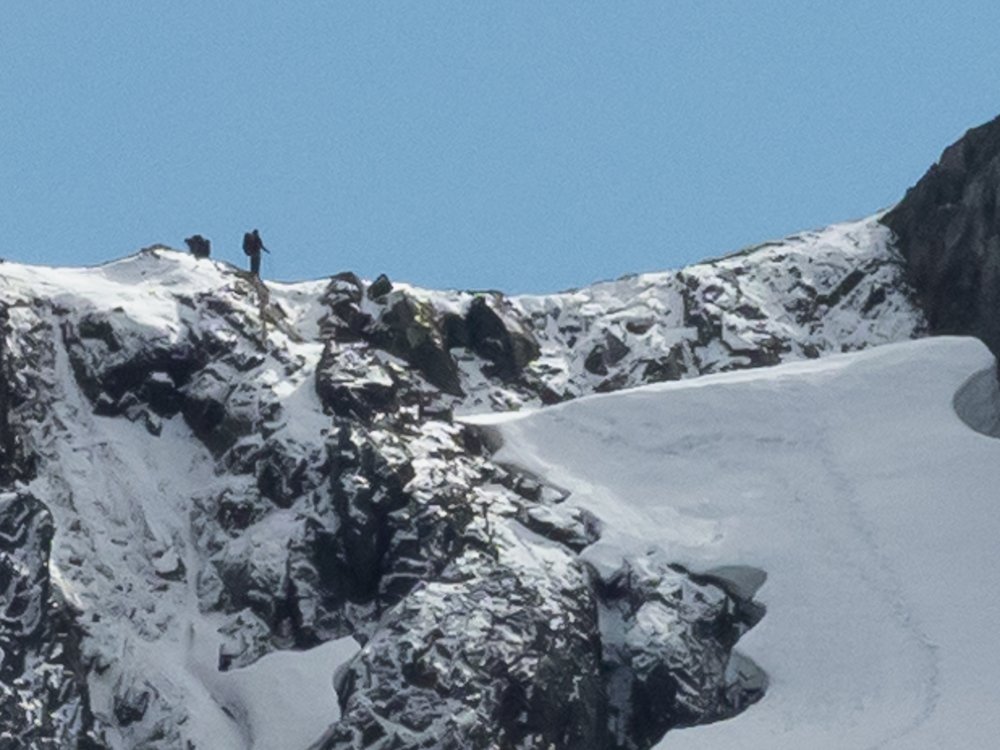
pcg
Members-
Posts
452 -
Joined
-
Last visited
About pcg
- Birthday 11/30/1999
Converted
-
Homepage
www.paulcglasserfineart.com
-
Location
OR
Recent Profile Visitors
The recent visitors block is disabled and is not being shown to other users.
pcg's Achievements
-
What brand? All I'm aware of is UDAP.
-
Oregon Washington Columbia River Gorge Cliff Walls?!?!
pcg replied to boaz's topic in Climber's Board
Gorge Classic Climbs, Portland Rock Climbs, and Northwest Oregon Rock all by Tim Olson -
That makes more sense given the weather that week. What a grand place to do research!
-
Who started the Ptarmigan Traverse on 9/17, one day into a three-day weather window? I saw you while I was going up Sahale Arm. I'm interested to hear if you beat the weather.
-
That confused me at first as well, but I think he meant he climbed each pitch twice, and rapped it once, while ascending.
-
"Along the way were more “micro adventures” than I can remember. I won’t bore you with each one here, but ask me about them sometime if you’re ever interested:" OK, I'll bite, let's hear about these... "Camping with the Crazy Guy and his nightly Banshee"... "The Bear and the Pizza"... "-Scared s***less on North Sister"... Great adventure and thanks for sharing!
-
I think I'm more conservative than most and generally stay away from un-roped travel on glaciers with two exceptions: 1) In late season, if all of last winter/spring snow is gone, the temperatures are back into freezing conditions, and no substantial new snow has fallen, I generally assume that the remaining ice and neve is solid. Crevasses are open and obvious, any snow bridges that are going to collapse have done so, and glacier travel then becomes a route finding problem. With a little experience you’ll be able to easily spot any patches of snow that are from the current season and whether what lies beneath it is suspect or not. 2) If I’m already familiar with a glacier, having previously explored it in the above conditions and feel confident I know where crevasses usually form on that particular glacier, AND I’m not traveling in an obvious location while crevasses are likely to form (i.e. convex flow), then I will sometimes travel un-roped across those regions. This is when you crank your crevasse radar up to high and use your spidey sense to look intently for those subtle hints (slightly sagging snow, etc.) that something might lie below. Obviously you are now assuming more risk than in instance #1 above. If I feel I have to probe to go forward, then I generally back off. That’s more risk than I’m willing to take.
-
Not offering to mentor, but I would love to hear more about that trip to the Patagonia Ice Field. Did you write up any kind of trip report? Link?
-
I concur with Jason. I think after your trip you'll be re-thinking which boots were "proper". As long as you have some hinged crampons that can be made secure those boots will be fine for a summer climb on Mt. Adams south side. I can't tell you how many times I've seen folks climbing moderate terrain in heavy stiff mountaineering boots. They would enjoy the experience so much more if they would shed some unnecessary pounds and stiffness from their feet. I guess if you're carrying a really heavy backpack you might want more support and stiffness, but if you're carrying a really heavy backpack up Mt. Adams you're not going to have much fun.
-
I'm not qualified to be your mentor, and have never been a mountain guide. That's a pretty high bar from where I stand. However, I've been a backcountry ski guide so I do know about guiding and I can offer this comment... even if you become qualified from a skills standpoint, you won't succeed unless you are a people person. In this case, "doing what you love" needs to include mentoring, helping, and otherwise helping people have a good time. Yes, you have to keep them safe and know your stuff and be in super physical shape and all that, but if you don't enjoy figuring out what it takes to make someone comfortable and feel good about themselves and then work hard to do so, then this isn't the occupation for you. Also, under the best of circumstances, it's difficult to provide even the bare necessities to live for more than just yourself on a guide's income. I enjoyed my guiding experience probably more than any other job I've ever had, but I couldn't make a living out of it. I had to have a second job to pay the rent.
-
The most common south side route is not steep and has no exposed loose rock, so the main concern on that route is weather conditions. Aside from weather, you just need to be able to know how to travel safely if the snow is hard and icy, i.e. how to self-arrest, don't glissade with crampons on, etc. When is the best time of year? Depends on the weather, when the road to Cold Springs Campground opens, if you are a skier, and how you like long approaches, or not, on skis. If you are snow savy and don't mind a long approach then take note that some high pressure is coming in soon. There are avy slopes around Crescent Glacier and on SW Chutes. Staying on the traditional SS route is more benign.
-
I think what's reasonable is to establish policies that protect them and their habitat and then let them self-restore on their own, or not. Who knows better than grizzlies what habitat is suitable for them. Seems more natural than shocking an ecosystem with a man-made abrupt fix. I would love to see grizzlies in the NC, but ones that peaceably wandered in and settled down on their own, not ones that were yanked out of their home and dropped into a new and strange and unfamiliar land. We just need to respect and protect the land and then otherwise leave it alone so it can return to its natural state. It's a bit presumptuous for us to assume we know what that is.
-
Wow what a great day! Any comments on snow stability/structure that you noticed?
-
I've never done this in July, but something no one has mentioned... I would plan on getting to Piker's Peak by noon. If it's too hard and icy to ski the SW chutes then sit down in the sun, have lunch, and wait for the corn to ripen. When your window arrives then drop in, knowing that it will be softer down below. This keeps you away from late afternoon sun when a wet avalanche is possible, as others have mentioned. If you are in good shape (not just aerobically but also used to hiking uphill a lot) you can manage this as a fun day trip from Cold Springs campground with an early start. I prefer to take comfy lightweight boots/crampons for the steep slog up and load my AT skis/boots on my back. It's a real workout. Edit: An altimeter is very useful for knowing when to start cutting back towards the trail you came up. I think you'll be sorry if you ski all the way straight down to the Round the Mountain trail that late in the year. This is NOT a trip to do if there is a chance of a whiteout, despite navigation skills, as the terrain cutting back over to the south side is fraught with obstacles.
-
Soloing is climbing by yourself. Free climbing is climbing w/o aid. Free soloing is free climbing without a belay. Rope soling is any kind of climbing (free or aid) by yourself, with a rope for self-belay. Grade has nothing to do with it.




